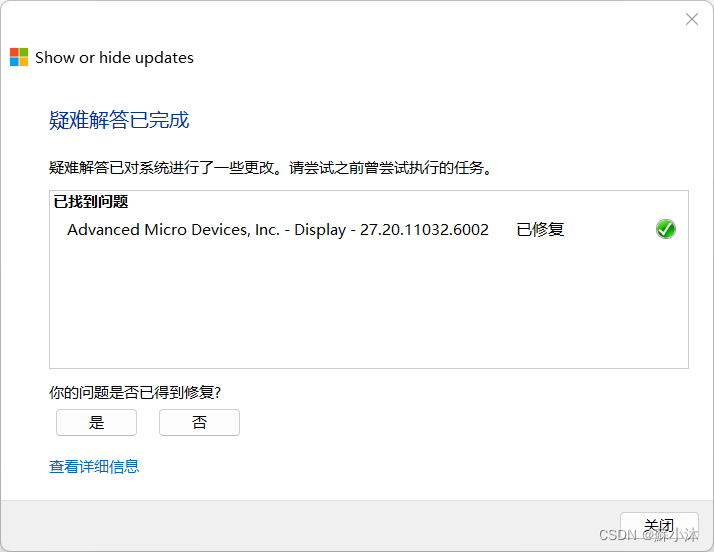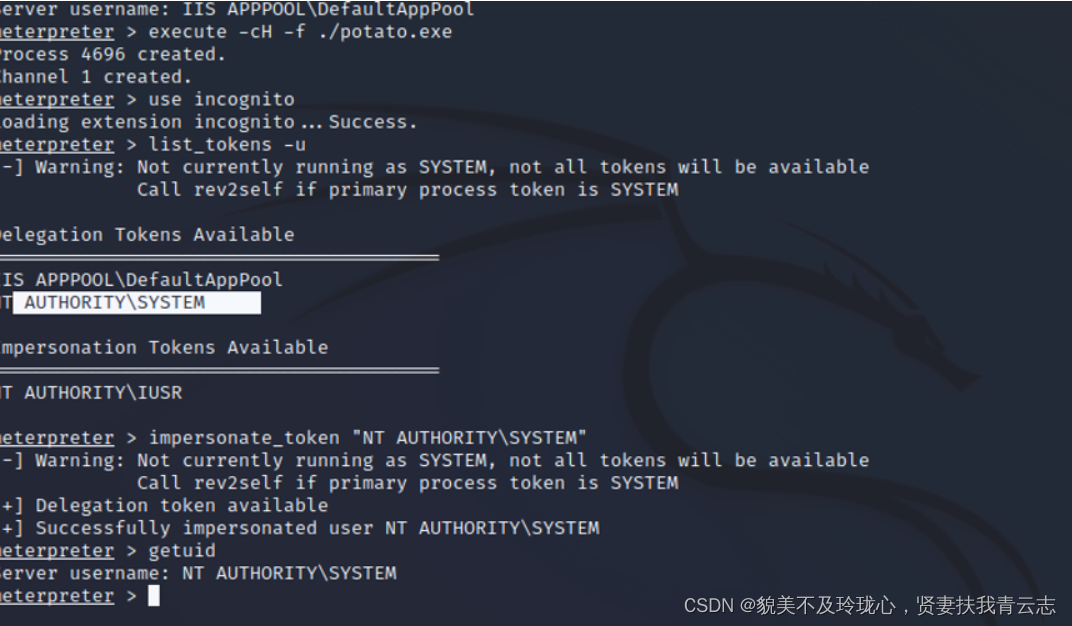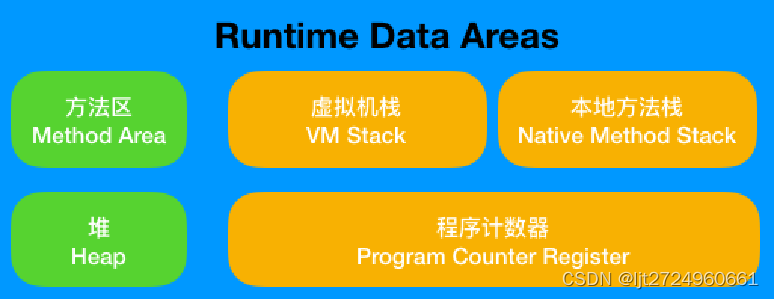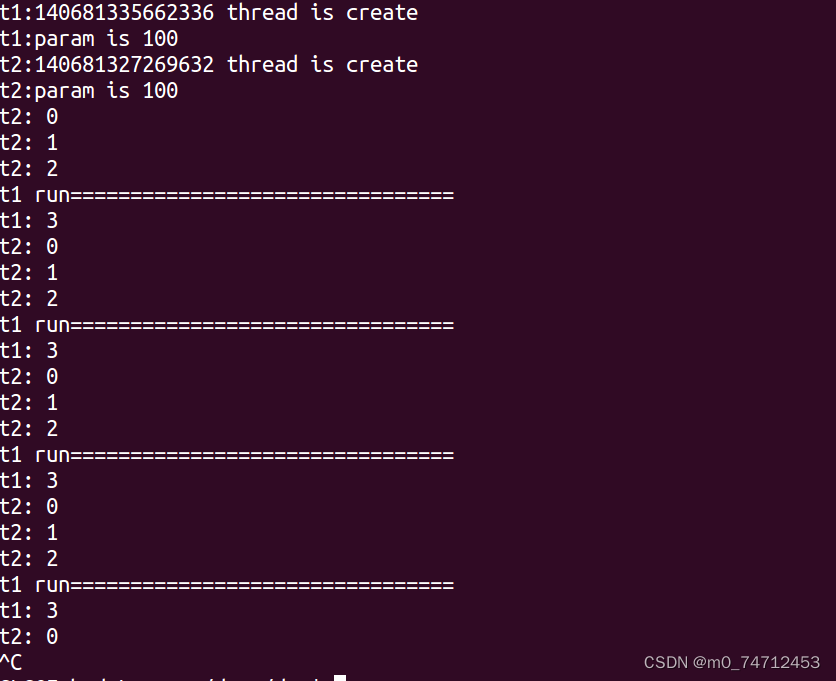ShardingSphere笔记(二):自定义分片算法 — 按月分表·真·自动建表
文章目录
- ShardingSphere笔记(二):自定义分片算法 — 按月分表·真·自动建表
- 一、 前言
- 二、 Springboot 的动态数据库
- 三、 实现我们自己的动态数据库
- 1. POM
- 2. 实现 AbstractRoutingDatasource
- 3. 创建数据源
- 四、实现按月分表算法
- 1. 分表算法
- 2. 添加SPI
- 五、自动建表
- 六、 拓展
- 七、源代码
一、 前言
上一篇文章中,已经介绍了shardingshpere 怎么进行按月分表。但是我们知道,一般来说按月分表肯定是本月到了之后才会进行建表,因为我们不可能预想到系统到底可以运行多久。而且在第一篇文章里面也已经提到了,Shardingshpere 默认是要求配置的实际表都是存在的。
难不成我们要每年建一次当年的按月分表的数据库表,每年改一次软件的配置文件然后重启软件吗?且不说如果维护项目的大兄弟离职,锅会留给下一个接手项目的人。这种每年修改一次,提心吊胆的记着改数据库,改软件的苦差事,一点都不优雅。
那么有没有好一点的方法能够让它自动建表呢?欸,这就得说说我在研究的过程中,碰巧碰到了一种骚操作,可以在运行过程中建表,并且能让sharesphere 框架知道新增了表,自动更新表缓存。
因此这篇文章最后能实现下面的这几个效果:
- 使用Shardingsphere 实现按月分表的查询功能。
- 根据查询的语句判断该月的表是否存在,不存在自动建表,并自动刷新到shardingsphere缓存表中。
- 实现多数据库切换功能。并且提供原生的数据库操作数据源,因为从第一篇文章我们已经知道,shardingsphere数据源不支持数据库函数,不支持原生ddl操作,提供原生数据源可以保证我们在原生数据源中执行一些Shardingsphere不支持的操作。
不过、因为是骚操作,可能的缺点有两个:
- 该骚操作可能会受ShardingSphere版本影响,万一哪天ShardingSphere程序员爸爸修改了表缓存逻辑,这一块儿逻辑就有可能失效了(目前版本 5.2.1)
- 数据库里面必须存在一个逻辑表,因为自动建表语句是利用的mysql的 CREATE TABLE LIKE 创建的,你得保证有这么个表我才能建表罢,所以哪怕这个表实际上用不到,数据库中也要存在一个这样的表。
二、 Springboot 的动态数据库
因为要实现多数据源的动态切库,这里需要先介绍Springboot 是怎么做动态数据库切库的。
如果已经有大佬对springboot 的动态数据门儿清的话,可以跳过这一节。
众所周知,好吧,至少刚入职的时候我不知道,Springboot 通过 AbstractRoutingDatasource 切换不同的数据源。默认的springboot是单数据库的数据源。如果我们要实现多数据源的动态切换就需要实现 AbstractRoutingDatasource。 并将该DataSource 作为一个Bean注册到Spring中。
那么 AbstractRoutingDatasource 是怎么做到多数据源的呢?众所~~,好吧不废话了,我们首先看看DataSource的作用是什么。下面是Datasource的源码。
public interface DataSource extends CommonDataSource, Wrapper {
/**
* <p>Attempts to establish a connection with the data source that
* this {@code DataSource} object represents.
*
* @return a connection to the data source
* @exception SQLException if a database access error occurs
* @throws java.sql.SQLTimeoutException when the driver has determined that the
* timeout value specified by the {@code setLoginTimeout} method
* has been exceeded and has at least tried to cancel the
* current database connection attempt
*/
Connection getConnection() throws SQLException;
/// ..... 无关紧要的代码
}
简单说呢,就是获取当前数据库的一个Connection,诶嘿,人家可没说这个就只能返回一个数据库的连接,说的只是当前数据库的连接。没错,AbstractRoutingDatasource 作者肯定就是Get到了这个语言上的小差别。
AbstractRoutingDatasource 重写了这个 getConnection.
public abstract class AbstractRoutingDataSource extends AbstractDataSource implements InitializingBean {
/**
* 配置多个数据源,
* key:string唯一标识数据源,
* value: datasource 数据源
*/
@Nullable
private Map<Object, DataSource> resolvedDataSources;
public Connection getConnection() throws SQLException {
return this.determineTargetDataSource().getConnection();
}
/**
* 确定当前的数据源
*/
protected DataSource determineTargetDataSource() {
// 获取数据库Id(key)
Object lookupKey = this.determineCurrentLookupKey();
// 根据Id获取数据源
DataSource dataSource = (DataSource)this.resolvedDataSources.get(lookupKey);
// 忽略一些校验,返回数据源
return dataSource;
}
/**
* 获取当前数据库的Id(Key)
* 这个方法就是Springboot留给我们扩展的点了。
* 所以呀:
* 如果你想实现自己的动态切换数据库的框架,只需要扩展两点就可以了
* 1. 拿到你的多个数据源和他们的Id(自己随便指定)组合成一个map 设置给 resolvedDataSources
* 2. 实现该方法,确定什么时候用哪一个数据库。
*/
@Nullable
protected abstract Object determineCurrentLookupKey();
}
三、 实现我们自己的动态数据库
1. POM
在这之前,先把POM文件依赖贴一下吧,否则缺少某个库的函数导致代码复现不出来大家该说耍流氓了。
<!-- 没什么用,辅助Idea做配置文件提示的 -->
<dependency>
<groupId>org.springframework.boot</groupId>
<artifactId>spring-boot-configuration-processor</artifactId>
<optional>true</optional>
</dependency>
<!-- Lombok 开发神器,懂得都懂 -->
<dependency>
<groupId>org.projectlombok</groupId>
<artifactId>lombok</artifactId>
<optional>true</optional>
</dependency>
<!-- ShardingSphere 核心依赖 -->
<dependency>
<groupId>org.apache.shardingsphere</groupId>
<artifactId>shardingsphere-jdbc-core</artifactId>
<version>${shardingsphere-jdbc.version}</version>
</dependency>
<dependency>
<groupId>mysql</groupId>
<artifactId>mysql-connector-java</artifactId>
</dependency>
<dependency>
<groupId>org.springframework.boot</groupId>
<artifactId>spring-boot-starter-jdbc</artifactId>
</dependency>
<!-- 工具类库,有点大,看需求引入,只是用习惯了 -->
<dependency>
<groupId>cn.hutool</groupId>
<artifactId>hutool-all</artifactId>
<version>5.8.11</version>
</dependency>
<!-- 阿里的 Transmittable ThreadLocal 解决父子线程值传递问题 -->
<dependency>
<groupId>com.alibaba</groupId>
<artifactId>transmittable-thread-local</artifactId>
<version>2.14.2</version>
</dependency>
2. 实现 AbstractRoutingDatasource
ShardingSphereDynamicDataSource
public class ShardingSphereDynamicDataSource extends AbstractRoutingDataSource {
/**
* 多数据库 Map,
* 这里重新创建了一个Map对象目的有两个
* 1. ards 的 resolvedDataSources 是 private 的,子类无法访问。
* 2. 设置为static方式的,可以通过静态方法访问,更方便。
*/
static final Map<Object, Object> DATA_SOURCE_MAP = new ConcurrentHashMap<>(10);
private String defaultDataSource;
public ShardingSphereDynamicDataSource(LinkedHashMap<String, DataSource> dataSourceMap) {
// 将多数据库Map设置给 resolvedDataSources
setTargetDataSources(DATA_SOURCE_MAP);
dataSourceMap.forEach((dsName, ds) -> {
DATA_SOURCE_MAP.put(dsName, ds);
if (defaultDataSource == null) {
// 设置默认数据源
defaultDataSource = dsName;
setDefaultTargetDataSource(ds);
}
});
}
@Override
protected Object determineCurrentLookupKey() {
// 通过ThreadLocal 获取数据库Id,防止多线程设置当前数据源导致的并发问题
return DynamicDataSourceHelper.dataSourceKey();
}
/**
* 动态添加数据源
*/
public void addDataSource(String dataSourceKey, DataSource dataSource) {
DATA_SOURCE_MAP.put(dataSourceKey, dataSource);
afterPropertiesSet();
}
/**
* 获取默认数据源
*/
public String getDefaultDataSource() {
return defaultDataSource;
}
/**
* 根据数据源Id获取数据源
*/
public DataSource getDataSourceById(String id) {
return ((DataSource) DATA_SOURCE_MAP.get(id));
}
}
上面的代码比较简单,只要理解了Springboot是怎么做多数据源的,上面代码就很容易看懂了。
不过里面有一个 DynamicDataSourceHelper ,这个是做什么用的呢?
你想啊,我们有了多数据源了,我们是不是要决定什么时候用哪一个数据库?
这个类就是做这个用的,它其实核心就是维护了一个ThreadLocal, 要设置用哪一个数据库的时候,往这个ThreadLocal 里面设置当前数据库的Key, 上面在获取当前数据库的时候就从这个 ThreadLoca里面取值。
为什么要用ThreadLocal 维护呢,直接设置String不行吗?当然不行,多线程中用数据源的时候,到底谁说了算呢?当然最好的方式是每个线程管自己的。用ThreadLocal专业对口嘛。
另外这里用了阿里的 TransmittableThreadLocal, 目的是为了解决父子线程的传值问题。
DynamicDataSourceHelper
public class DynamicDataSourceHelper {
/**
* 用来判断 ShardingSphere 和 普通数据源的,这里可以先不管它,后面会提到。
*/
public static final String RAW_DATASOURCE_PREFIX = "sharding::raw::";
/**
* 使用Alibaba的 TransmittableThreadLocal 解决数据源切换的父子线程之间数据传递的问题
*/
private static final ThreadLocal<String> DATA_SOURCE_KEY = new TransmittableThreadLocal<>();
/**
* 设置当前使用的数据源Id
*/
public static void setDataSource(String dataSourceKey) {
DATA_SOURCE_KEY.set(dataSourceKey);
}
/**
* 设置当前使用的原始数据源Id(使用该方法标识使用的不是ShardingSphere数据源,而是原始数据源)
*/
public static void setRawJdbcDataSource(String dataSourceKey) {
if (isRawJdbcDataSourceKey(dataSourceKey)) {
DATA_SOURCE_KEY.set(dataSourceKey);
} else {
DATA_SOURCE_KEY.set(RAW_DATASOURCE_PREFIX + dataSourceKey);
}
}
/**
* 使用默认数据源
*/
public static void defaultDataSource() {
DATA_SOURCE_KEY.remove();
}
/**
* 获取当前使用的数据源Id
*/
public static String dataSourceKey() {
return DATA_SOURCE_KEY.get();
}
/**
* 判断该数据源Id是否存在
*/
public static boolean containsDataSource(String datasource) {
return ShardingSphereDynamicDataSource.DATA_SOURCE_MAP.containsKey(datasource);
}
/**
* 根据ShardingShpere 的数据源Id获取到对应的原始数据源Id
* 目的是可以获取到ShardingSphere对应的原始数据源。
* 还记得上面说我们要能提供原始ddlsql的执行能力吗?
* ShardingSphere不支持,单我们可以通过对应的原始数据源来执行。
*/
public static String rawJdbcDataSourceKey(String key) {
if (key.startsWith(RAW_DATASOURCE_PREFIX)) {
return key;
}
return RAW_DATASOURCE_PREFIX + key;
}
/**
* 判断是否是原始数据源,这里默认认为原始数据源的Id比ShardingSphere 的数据源Id多一个前缀
* 也就是上面那个静态变量(sharding::raw::)
*/
public static boolean isRawJdbcDataSourceKey(String key) {
if (StrUtil.isEmpty(key)) {
return false;
}
return key.startsWith(RAW_DATASOURCE_PREFIX);
}
}
上面的代码中,已经把怎么切换数据库的逻辑部分写完了,当然它还只是一个架子,还没有具体设置数据源呢,相当于把API给写完了。那这个Api怎么用呢?
public void switchDataSource() {
// 切换到 ds1 的ShardingSphere数据源
DynamicDataSourceHelper.setDataSource("ds1");
mapper.selectSomething();
jpaRepo.selectByXXX();
// 切换到 ds1 的原始Jdbc数据源
DynamicDataSourceHelper.setRawJdbcDataSource("ds1");
mapper.selectSomething();
jpaRepo.selectByXXX();
// 切换到 ds2 的ShardingSphere数据源
DynamicDataSourceHelper.setDataSource("ds2");
mapper.selectSomething();
jpaRepo.selectByXXX();
// 切换到 ds2 的原始Jdbc数据源
DynamicDataSourceHelper.setRawJdbcDataSource("ds2");
mapper.selectSomething();
jpaRepo.selectByXXX();
}
3. 创建数据源
上面相当于已经把好看的皮囊写完了,灵魂还没有呢,俗话说得好,“好看的皮囊千篇一律,有趣的灵魂万里挑一”, 没有有趣的灵魂怎么能行呢?
这里主要要确定的一个问题是?我们怎么拿到多个数据源?熟悉那些多数据源开源框架的朋友应该比较了解,配置文件嘛。 所以这里大致制定一个规范,如何读取数据源。配置文件结构如下:
spring:
shardingsphere:
props:
# 是否显示 ShardingSpher 的sql,用于Debug
sql-show: true
datasource:
# 数据源名称列表
names: ds1,ds2
# 数据源1
ds1:
type: com.zaxxer.hikari.HikariDataSource
driver-class-name: com.mysql.jdbc.Driver
jdbc-url: jdbc:mysql://127.0.0.1:3306/test1?useSSL=false&useUnicode=true&characterEncoding=utf-8&zeroDateTimeBehavior=convertToNull&serverTimezone=Asia/Shanghai&allowMultiQueries=true
username: root
password: 123456
# 数据2
ds2:
type: com.zaxxer.hikari.HikariDataSource
driver-class-name: com.mysql.jdbc.Driver
jdbc-url: jdbc:mysql://127.0.0.1:3306/test2?useSSL=false&useUnicode=true&characterEncoding=utf-8&zeroDateTimeBehavior=convertToNull&serverTimezone=Asia/Shanghai&allowMultiQueries=true
username: root
password: 123456
rules:
sharding:
tables:
# 按月分表的数据表(只需要配置逻辑表即可,程序会自动探测存在的表)
# 但必须保证逻辑表必须存在,即使它在真实程序中不被使用,因为要通过它自动建表
# 这里可能细心的朋友已经发现了,这样写逻辑岂不是所有数据源的分表都一样了吗?
# 这里确实,因为公司项目里面就是所有数据源的数据库都是一样的,所以就这样写了。
# 如果大家自己的项目里面多个数据源每个数据库表不一样,分表的数据表也不一样,可以改这一块逻辑。每个数据库的分表单独设置。
binding-tables: data, test_data
上面的哦配置文件应该也比较清晰了,这里就不具体解释了,下面就要通过解析该配置文件创建数据库了。
这里就要做一个小约定了,上面我们配置了两个数据源,但是实际上我们要创建两类,四个数据源。它们分别是:
- ShardingSphere 的数据源 ds1, ds2。
- 原始数据源 sharding::raw::ds1, sharding::raw::ds2
还记的上面的原始数据源前缀吗?就是用在这里的,用它加上数据源的Id创建原始数据源的Id。
/**
* @Configuration 标识这是一个配置类,Springboot会自动扫描(也方便我们后面制作Springboot-starter)
*
* @AutoConfigureBefore(DataSourceAutoConfiguration.class)
* 我们要保证该配置在Springboot的Datasource配置类之前执行,因为我们要用自己 DIY 的数据源了。得插个队。
* @author wangp
*/
@Slf4j
@Configuration
@AutoConfigureBefore(DataSourceAutoConfiguration.class)
public class AkxyShardingSphereAutoConfiguration {
/**
* 读取到有那些表需要进行分表
*/
@Value("${spring.shardingsphere.rules.sharding.tables.binding-tables}")
private List<String> bindingTables;
@Bean
public DataSource dataSource(Environment environment) throws SQLException {
Binder binder = Binder.get(environment);
Properties properties = binder.bind("spring.shardingsphere.props", Properties.class).orElse(new Properties());
// 从配置文件中读取数据源
Map<String, DataSource> dataSourceMap = DatasourceHelper.createDataSourceMap(environment);
LinkedHashMap<String, DataSource> resultDatasourceMap = new LinkedHashMap<>();
for (String dataSourceName : dataSourceMap.keySet()) {
DataSource dataSource = dataSourceMap.get(dataSourceName);
// 创建ShardingSphere 数据源
DataSource shardingSphereDatasource = ShardingSphereDataSourceFactory.createDataSource(dataSource,
Collections.singleton(createShardingRuleConfiguration(dataSource)), properties);
resultDatasourceMap.put(dataSourceName, shardingSphereDatasource);
}
// 同时创建一份 原始的 JDBC DataSource, 并且给它们设置前缀,用于区分不同类型的数据源
for (String dataSourceName : dataSourceMap.keySet()) {
resultDatasourceMap.put(DynamicDataSourceHelper.rawJdbcDataSourceKey(dataSourceName),
dataSourceMap.get(dataSourceName));
}
// 创建动态数据源
return new ShardingSphereDynamicDataSource(resultDatasourceMap);
}
/**
* 切片规则配置
*/
private ShardingRuleConfiguration createShardingRuleConfiguration(DataSource dataSource) throws SQLException {
ShardingRuleConfiguration result = new ShardingRuleConfiguration();
for (String bindingTable : bindingTables) {
// 为每一个分表的数据表创建分表规则
result.getTables().add(getTableRuleConfiguration(dataSource, bindingTable));
}
// 设置分表策略, key: acquisition_time 标识分表的数据列,这里的时间列也是写死的,需要用的朋友注意了,可以写在配置文件里,也可以在代码里面改。
// 设置分表算法: his-data-spi-based 为算法Id
result.setDefaultTableShardingStrategy(
new StandardShardingStrategyConfiguration("acquisition_time", "his-data-spi-based"));
// 设置分表算法Map, 上面的算法Id会从这个Map里面找对应的算法
// HIS_DATA_SPI_BASED 这个Id是通过 SPI的方式注册的分表算法,SPI的方式具体请参考第二篇文章。
result.getShardingAlgorithms().put("his-data-spi-based",
new AlgorithmConfiguration("HIS_DATA_SPI_BASED", new Properties()));
return result;
}
/**
* 创建分表规则(从ShardingSphere Starter 代码里面抄的~_~)
*/
private ShardingTableRuleConfiguration getTableRuleConfiguration(DataSource dataSource, String logicTableName) throws SQLException {
Set<String> existsActuallyTableSet;
try (Connection connection = dataSource.getConnection()) {
// 查询实际上存在的表(标规则 logictable_yyyyMM)
// 因为这里还没有创建ShardingSphere的数据源呢,这里的数据源还是原始的数据源,还没有被代理,所以可以执行一些原始SQL语句
existsActuallyTableSet = MonthShardingDatabaseUtil.queryActuallyTables(connection, logicTableName);
// 如果真实表不存在的话, 根据逻辑表创建一个新的表
if (CollectionUtil.isEmpty(existsActuallyTableSet)) {
// 创建一个当前时间对应的月的表
String createTable = logicTableName + MonthShardingDatabaseUtil.shardingSuffix(new Date());
if (MonthShardingDatabaseUtil.createTableLike(connection, logicTableName, createTable)) {
existsActuallyTableSet = new LinkedHashSet<>();
existsActuallyTableSet.add(createTable);
log.info("actually table for {} not exists, auto create one : {}", logicTableName, createTable);
} else {
throw new IllegalStateException("Could not create table " + createTable);
}
}
}
// 组合实际存在的表节点列表, 比如: logic_db.data_202301,logic_db_data_202302
String actuallyTableNodes = existsActuallyTableSet.stream()
.map(tableName -> StrUtil.format("{}.{}", "logic_db", tableName))
.collect(Collectors.joining(","));
ShardingTableRuleConfiguration result = new ShardingTableRuleConfiguration(logicTableName, actuallyTableNodes);
// 设置分表策略, key: acquisition_time 标识分表的数据列,这里的时间列也是写死的,需要用的朋友注意了,可以写在配置文件里,也可以在代码里面改。
result.setTableShardingStrategy(new StandardShardingStrategyConfiguration(
"acquisition_time", "his-data-spi-based"));
return result;
}
@Bean
public AutoCreateTableHelper tableHelper(DataSource dataSource) {
// 自动建表Helper,后面会提及
return new AutoCreateTableHelper(dataSource);
}
}
上面的代码中,从配置文件里面读取数据源列表,读取分表的数据表列表,然后通过他们来构建ShardingSphere数据源和原始JDBC数据源,并通过他们生成我们上面的动态数据源,注册为Springboot的bean。
上面有两个工具类,DatasourceHelper, MonthShardingDatabaseUtil 这两个工具类一个作用是从配置文件读取Datasource,一个是按月分表的工具类,提供了一个辅助方法。希望别嫌代码多,我也贴出来了,我会把代码也传上去,嫌多的伙伴可以不看这一部分,直接下载源码用。
DatasourceHelper
/**
* @author wangp
*/
public class DatasourceHelper {
private static final String PREFIX = "spring.shardingsphere.datasource.";
private static final String DATA_SOURCE_NAME = "name";
private static final String DATA_SOURCE_NAMES = "names";
private static final String DATA_SOURCE_TYPE = "type";
@SuppressWarnings("unchecked")
public static DataSource getDataSource(final Environment environment, final String dataSourceName) throws NamingException {
Binder binder = Binder.get(environment);
BindResult<Map> bind = binder.bind(toDashedForm(String.join("", PREFIX, dataSourceName)), Map.class);
Map<String, Object> dataSourceProps = bind.get();
Preconditions.checkState(!dataSourceProps.isEmpty(), "Wrong datasource [%s] properties.", dataSourceName);
return DataSourcePoolCreator.create(new DataSourceProperties(dataSourceProps.get(DATA_SOURCE_TYPE).toString(),
getCamelCaseKeys(dataSourceProps)));
}
private static String toDashedForm(final String name) {
StringBuilder result = new StringBuilder(name.length());
boolean inIndex = false;
for (int i = 0; i < name.length(); i++) {
char ch = name.charAt(i);
if (inIndex) {
result.append(ch);
if (ch == ']') {
inIndex = false;
}
} else {
if (ch == '[') {
inIndex = true;
result.append(ch);
} else {
ch = (ch != '_') ? ch : '-';
if (Character.isUpperCase(ch) && result.length() > 0 && result.charAt(result.length() - 1) != '-') {
result.append('-');
}
result.append(Character.toLowerCase(ch));
}
}
}
return result.toString();
}
public static Map<String, Object> getCamelCaseKeys(final Map<String, Object> dataSourceProps) {
Map<String, Object> result = new LinkedHashMap<>(dataSourceProps.size(), 1);
for (Map.Entry<String, Object> entry : dataSourceProps.entrySet()) {
String key = entry.getKey();
result.put(key.contains("-") ? CaseFormat.LOWER_HYPHEN.to(CaseFormat.LOWER_CAMEL, key) : key, entry.getValue());
}
return result;
}
private static List<String> getDataSourceNames(final Environment environment) {
StandardEnvironment standardEnv = (StandardEnvironment) environment;
standardEnv.setIgnoreUnresolvableNestedPlaceholders(true);
String dataSourceNames = standardEnv.getProperty(PREFIX + DATA_SOURCE_NAME);
if (Strings.isNullOrEmpty(dataSourceNames)) {
dataSourceNames = standardEnv.getProperty(PREFIX + DATA_SOURCE_NAMES);
}
return new InlineExpressionParser(dataSourceNames).splitAndEvaluate();
}
public static Map<String, DataSource> createDataSourceMap(Environment environment) {
Map<String, DataSource> result = new LinkedHashMap<>();
for (String each : getDataSourceNames(environment)) {
try {
result.put(each, getDataSource(environment, each));
} catch (final NamingException ex) {
throw new IllegalStateException(ex);
}
}
return result;
}
}
MonthShardingDatabaseUtil
/**
* @author wangp
*/
@Slf4j
public class MonthShardingDatabaseUtil {
/**
* 这里使用ThreadLocal的一个目的是因为SimpleDateFormat 不是线程安全的
*/
private static final ThreadLocal<SimpleDateFormat> formatThreadLocal = ThreadLocal.withInitial(() -> new SimpleDateFormat("yyyyMM"));
/**
* 根据逻辑表从数据库刷新实际表
*/
public static Set<String> queryActuallyTables(Connection connection, String logicTableName) {
// 使用正则表达式过滤符合条件的表 stress_data_[0-9]{4}
Pattern monthPattern = Pattern.compile("^" + logicTableName + "_[0-9]{6}$");
try (Statement statement = connection.createStatement()) {
String sql = "SHOW TABLES LIKE '" + logicTableName + "_%';";
ResultSet resultSet = statement.executeQuery(sql);
Set<String> tables = new LinkedHashSet<>();
while (resultSet.next()) {
String tableName = resultSet.getString(1);
if (monthPattern.matcher(tableName).matches()) {
tables.add(tableName);
}
}
return tables;
} catch (SQLException e) {
log.error("queryActuallyTables failed", e);
return null;
}
}
/**
* 创建数据库表, 并开启双重验证判断表是否创建成功
*
* @param likeTable 逻辑表名称
* @param createTable 实际表名称
*/
public static boolean createTableLike(Connection connection, String likeTable, String createTable) {
try (Statement statement = connection.createStatement()) {
// create table stress_data_202210 like stress_data
statement.execute("CREATE TABLE " + createTable + " LIKE " + likeTable + ";");
// double check
ResultSet resultSet = statement.executeQuery("SHOW TABLES LIKE '" + createTable + "';");
if (resultSet.next()) {
log.info("Auto create actually table {} success", createTable);
return resultSet.getString(1) != null;
} else {
log.info("Auto create actually table {} failure", createTable);
return false;
}
} catch (SQLException e) {
// already exists
if (e.getMessage() != null && e.getMessage().contains("already exists")) {
return true;
}
log.error("fail to create actuallyTable '{}' from logicTable '{}'",
createTable, likeTable, e);
return false;
}
}
/**
* 按月分表的表后缀
*/
public static String shardingSuffix(Date shardingValue) {
return "_" + formatThreadLocal.get().format(shardingValue);
}
}
四、实现按月分表算法
我们中途休息一下,总结一下上面做了那些事情呢?
- 实现了多数据源的切换,并注册到Springboot中
- 从配置文件中读取多数据源,生成ShardingSphere数据域与原生数据库的数据源,设置到动态数据源中。
- 从配置文件中读取分表的数据库表,设置分表算法,根据自动从数据库中根据逻辑表扫描分表,添加到ShardingSphere数据源中,如果没有真实表存在,根据当前时间自动创建一个分表。
1. 分表算法
通过上面的总结,基本上已经把数据源给配置完成了,现在还缺少灵魂中的灵魂,分表算法。分表算法的添加流程这里就不在详细说了,具体流程可以参考第二篇文章 ShardingSphere笔记(二):自定义分片算法 — 按月分表。
/**
* 按月分表的 Sharding 算法
*
* @author wangp
*/
@Getter
@Slf4j
public class HisDataMonthShardingAlgorithm implements StandardShardingAlgorithm<Date> {
private final ThreadLocal<SimpleDateFormat> formatThreadLocal = ThreadLocal.withInitial(() -> new SimpleDateFormat("yyyyMM"));
private Properties props;
/**
* 自动建表的下限:时间小于该时间段的就不建表了,没有意义,这个时间可以自己在配置文件中设置,不设置默认为2018年01月
*/
private Date autoCreateTableLowerDate;
@Override
public void init(Properties properties) {
// 读取配置文件
this.props = properties;
String autoCreateTableLowerDate = properties.getProperty("auto-create-table-lower");
try {
this.autoCreateTableLowerDate = formatThreadLocal.get().parse(autoCreateTableLowerDate);
} catch (Exception e) {
log.error("parse auto-create table lower date failed: {}, use default date 2018-01", e.getMessage());
try {
this.autoCreateTableLowerDate = formatThreadLocal.get().parse("201801");
} catch (ParseException ignored) {
}
}
}
/**
* 精确匹配,只有在该条件下才需要自动建表。
* <p>
* 因为自动建表只有在存数据的时候才有意义,查询数据的时候表没有就没有了,存数据的时候没有表可就有问题了
* <p>
* 而存数据都是精确匹配,所以只需要在这里自动建表
*
* @param availableTargetNames 当前系统中可用的真实表列表
* @param shardingValue 精确匹配的条件
* @return 精确匹配后的表
*/
@Override
public String doSharding(Collection<String> availableTargetNames, PreciseShardingValue<Date> shardingValue) {
Date value = shardingValue.getValue();
String actuallyTableName = shardingValue.getLogicTableName() + MonthShardingDatabaseUtil.shardingSuffix(value);
// 从可用的列表总判断是否存在需要的表,如果表不存在,建表,并把建好的表再次添加到 availableTargetNames 中
// 这里添加到 availableTargetNames 相当于刷新了ShardingSphere的缓存了,这就是一个骚操作了,后面会贴一下源码
Collection<String> tables = AutoCreateTableHelper.getInstance()
.autoDetectionSchemeTables(shardingValue.getLogicTableName(),
Collections.singletonList(actuallyTableName), true);
availableTargetNames.addAll(tables);
return CollectionUtil.get(tables, 0);
}
/**
* 范围匹配,范围匹配都是查询、更新或者删除,所以表都是存在的不自动建表
*/
@Override
public Collection<String> doSharding(Collection<String> availableTargetNames, RangeShardingValue<Date> shardingValue) {
// 从查询时间到现在
Date time;
// 判断是否有下限
if (shardingValue.getValueRange().hasLowerBound()) {
time = shardingValue.getValueRange().lowerEndpoint();
} else {
// 无下限使用默认的下限
time = autoCreateTableLowerDate;
}
Date now;
// 判断是否有上限
if (shardingValue.getValueRange().hasUpperBound()) {
now = shardingValue.getValueRange().upperEndpoint();
} else {
// 往后延一个月 (无上限的话最多往后延一个月)
now = DateUtil.offsetMonth(new Date(), 1);
}
now = DateUtil.endOfMonth(now);
List<String> tableNames = new ArrayList<>();
while (time.before(now)) {
String actuallyTableName = shardingValue.getLogicTableName() + MonthShardingDatabaseUtil.shardingSuffix(time);
tableNames.add(actuallyTableName);
time = DateUtil.offsetMonth(time, 1);
}
// 这里不自动建表
final Collection<String> tables = AutoCreateTableHelper.getInstance()
.autoDetectionSchemeTables(shardingValue.getLogicTableName(), tableNames, false);
availableTargetNames.addAll(tables);
return tables;
}
/**
* SPI 方式实现的分表算法,算法标识ID为 HIS_DATA_SPI_BASED
*/
@Override
public String getType() {
return "HIS_DATA_SPI_BASED";
}
}
这里分表的逻辑是,查询到对应的真实表后,判断 ShardingSphere 中是否存在该真实表,如果表不存在,自动创建该表,并更新到ShardingSphere的缓存中。
这里就是一个骚操作的地方了,为甚了新加到 availableTargetNames 中的表 ShardingSphere 就认呢?不需要修改分表配置什么的吗?原来我也是这么想的,所以写的代码贼复杂,还要有定时任务重设 ShardingSphere配置,还不成功…, 后来追源码看到了一个神器的东西。如下:
ShardingSphere 源码中的路由逻辑如下:
ShardingStandardRoutingEngine
private Collection<DataNode> routeTables(final TableRule tableRule, final String routedDataSource,
final ShardingStrategy tableShardingStrategy, final List<ShardingConditionValue> tableShardingValues) {
// 从 TableRule 中获取真实表内容
Collection<String> availableTargetTables = tableRule.getActualTableNames(routedDataSource);
Collection<String> routedTables = tableShardingValues.isEmpty()
? availableTargetTables
: tableShardingStrategy.doSharding(availableTargetTables, tableShardingValues, tableRule.getTableDataNode(), properties);
Collection<DataNode> result = new LinkedList<>();
for (String each : routedTables) {
result.add(new DataNode(routedDataSource, each));
}
return result;
}
而 在TableRule 中,getActualTableNames() 是从一个Map中拿的值。作为缓存。
TableRule
private final Map<String, Collection<String>> dataSourceToTablesMap = new HashMap<>();
public Collection<String> getActualTableNames(final String targetDataSource) {
// 从缓存中拿真实表的列表
return dataSourceToTablesMap.getOrDefault(targetDataSource, Collections.emptySet());
}
private void addActualTable(final String datasourceName, final String tableName) {
// 添加真实表(框架在初始化的收自动调用)
dataSourceToTablesMap.computeIfAbsent(datasourceName, key -> new LinkedHashSet<>()).add(tableName);
}
可以看到,这里存的就是真实表列表,也会就是说我们修改的那个 availableTargetNames 就是这个缓存中的对象,人家是直接把对象给你了,那你岂不是想怎么操作就怎么操作了,诶嘿。
所以我前面会说,这个骚操作还挺依赖框架本身的实现的,万一人家哪一天不爽了,不想给你对象了,给你一个拷贝对象,就抓瞎了。
这里说明了,为什么初始的时候一定要存在一个真实表,如果不存在也一定要创建一个,这就是因为如果真实表一个也没有吗,框架本身不会调用 addActualTable 函数,就是说缓存map里面没有列表,就会返回 Collections.emptySet(), 而这个就是非常坑爹的不可修改集合 ,大家学集合基础知识的时候应该都注意过这一点。它不可修改就意味着自动建表的表没办法加进去了,就会报错,所以这里我们必须保证数据库里面一定至少要有一个真实表。
2. 添加SPI
在 resource/META-INF/services/org.apache.shardingsphere.sharding.spi.ShardingAlgorithm 文件中添加
com.akxy.platdatamanage.sharding.HisDataMonthShardingAlgorithm
五、自动建表
上面有一个自动建表的辅助类,这里就只贴源码了,不多做解释了,就是从数据库查询表,然后判断表是否存在,不存在建表,更新缓存。
就是几个关键的点:
- 使用原生JDBC数据源查找数据库中存在的真实表,建表。因为ShardingSphere数据源不支持。这也是我们上面设置了两种数据源的好处,正好就可以利用上。
- 查询到的数据库表进行缓存。提升查询速度。
/**
* @author wangp
*/
@Slf4j
public class AutoCreateTableHelper implements EnvironmentAware {
/**
* 利用Springboot的单例模式,方便使用
*/
private static AutoCreateTableHelper instance;
/**
* 冬天该数据源
*/
private final ShardingSphereDynamicDataSource dataSource;
/**
* 数据库的 数据源 : 逻辑表 : 实际表 缓存
*/
private final Map<String, Map<String, Set<String>>> dsLogicActuallyTableCache = new ConcurrentHashMap<>();
public AutoCreateTableHelper(DataSource dataSource) {
this.dataSource = ((ShardingSphereDynamicDataSource) dataSource);
}
public Collection<String> autoDetectionSchemeTables(String logicTableName,
Collection<String> actuallyTableNames, boolean createTable) {
// 当前数据源
String currentDataSource = getCurrentDataSource();
// 从动态数据库中获取数据源的原始JDBC数据源,因为ShardingSphere数据源做不到建表语句,必须使用原始JDBC数据源
try (Connection connection = getRawJdbcConnection()) {
if (connection == null) {
log.error("Un found raw jdbc resource to get connection for {}", currentDataSource);
return Collections.emptyList();
}
// 获取到缓存的数据源表
Set<String> cachedTables = getCachedTables(logicTableName, currentDataSource, connection);
// 不存在的表
List<String> notExistsTables = new ArrayList<>();
// 已存在的表
List<String> existsTables = new ArrayList<>();
actuallyTableNames.forEach(table -> {
if (cachedTables.contains(table)) {
existsTables.add(table);
} else {
notExistsTables.add(table);
}
});
if (notExistsTables.isEmpty()) {
return existsTables;
}
// 如果自动建表,创建那些不存在的表
if (createTable) {
String tableLike = cachedTables.stream().findAny().orElse(logicTableName);
for (String notExistsTable : notExistsTables) {
if (MonthShardingDatabaseUtil.createTableLike(connection, tableLike, notExistsTable)) {
cachedTables.add(notExistsTable);
existsTables.add(notExistsTable);
} else {
log.info("Auto create actually table failed");
}
}
} else {
// 重新从数据库中刷新数据
Set<String> databaseTables = MonthShardingDatabaseUtil.queryActuallyTables(connection, logicTableName);
if (databaseTables != null) {
// 刷新缓存
cachedTables.addAll(databaseTables);
notExistsTables.removeIf(table -> !databaseTables.contains(table));
existsTables.addAll(notExistsTables);
}
}
return existsTables;
} catch (Exception e) {
log.error("detection scheme table failed", e);
return Collections.emptyList();
}
}
private String getCurrentDataSource() {
String dataSourceKey = DynamicDataSourceHelper.dataSourceKey();
if (StrUtil.isEmpty(dataSourceKey)) {
return dataSource.getDefaultDataSource();
}
return dataSourceKey;
}
private Set<String> getCachedTables(String logicTableName, String currentDataSource, Connection connection) {
if (!dsLogicActuallyTableCache.containsKey(currentDataSource)) {
Set<String> dataSourceTables = MonthShardingDatabaseUtil.queryActuallyTables(connection, logicTableName);
if (dataSourceTables == null) {
return Collections.emptySet();
}
Map<String, Set<String>> tableMap = new ConcurrentHashMap<>();
tableMap.put(logicTableName, dataSourceTables);
dsLogicActuallyTableCache.put(currentDataSource, tableMap);
}
Map<String, Set<String>> tableMap = dsLogicActuallyTableCache.get(currentDataSource);
if (!tableMap.containsKey(logicTableName)) {
Set<String> dataSourceTables = MonthShardingDatabaseUtil.queryActuallyTables(connection, logicTableName);
if (dataSourceTables == null) {
return Collections.emptySet();
}
tableMap.put(logicTableName, dataSourceTables);
}
return tableMap.get(logicTableName);
}
/**
* 单例模式: 这里不使用Springboot的bean加载是为了防止作为lib的时候Bean加载时机不同导致的NPL
*/
public static AutoCreateTableHelper getInstance() {
return instance;
}
Connection getRawJdbcConnection() throws Exception {
String currentDataSource = getCurrentDataSource();
DataSource dataSourceById;
// 如果已经是 RAWJdbc的连接了,直接查找
if (DynamicDataSourceHelper.isRawJdbcDataSourceKey(currentDataSource)) {
dataSourceById = dataSource.getDataSourceById(currentDataSource);
if (dataSourceById != null) {
return dataSourceById.getConnection();
}
} else {
// 尝试查找Jdbc连接
dataSourceById = dataSource.getDataSourceById(DynamicDataSourceHelper.rawJdbcDataSourceKey(currentDataSource));
if (dataSourceById != null) {
return dataSourceById.getConnection();
}
// 如果查找不到,再次尝试使用原始连接查找
dataSourceById = dataSource.getDataSourceById(currentDataSource);
if (dataSourceById != null && !(dataSourceById instanceof ShardingSphereDataSource)) {
return dataSourceById.getConnection();
}
}
return null;
}
@Override
public void setEnvironment(Environment environment) {
instance = this;
}
}
六、 拓展
至此、所有的逻辑就已经写完了,使用的时候只需要配置配置文件即可。配置多数据源,配置那些表需要按月分表。
另外必须要提一个的就是,本项目是有缺陷的,因为基本上是为我们公司写的一个框架性项目,能满足本公司使用,额外的扩展性需求大佬们刻印扩展。
另外如果想做成 SpringbootStarter方式使用的话,做到代码的零侵入,直接引入即可使用,可以将其作为 Springboot-starter 来配置。
配置方式为:
resource/META-INF/spring.factories
org.springframework.boot.autoconfigure.EnableAutoConfiguration=com.akxy.platdatamanage.conf.AkxyShardingSphereAutoConfiguration
或者 Springboot 2.7 之后
resource/META-INF/spring/org.springframework.boot.autoconfigure.AutoConfiguration.imports
com.akxy.platdatamanage.conf.AkxyShardingSphereAutoConfiguration
两种都配置上,即可兼容不同的Springboot版本。
这样的话使用的时候只需要引入依赖,配置配置文件即可,就像 各种 Springboot-starter 使用那样。
七、源代码
刚写文章的时候看到了 CSDN支持上传代码包,就把源代码放到代码包里面了,不知道这个下载是不是需要积分啥的呢,反正上面已经把所有的代码头贴上去了。实在不行到时候另起一个仓库开源出来。完事,晚安世界。
贴一个最近瞎画的可爱宵宫,嘿嘿:
















